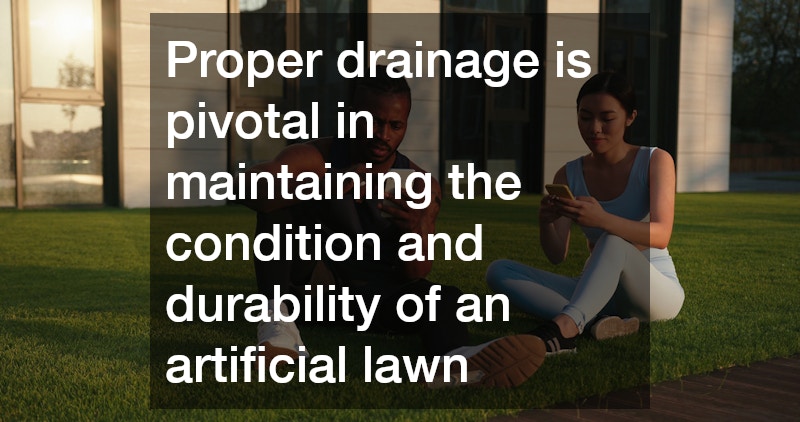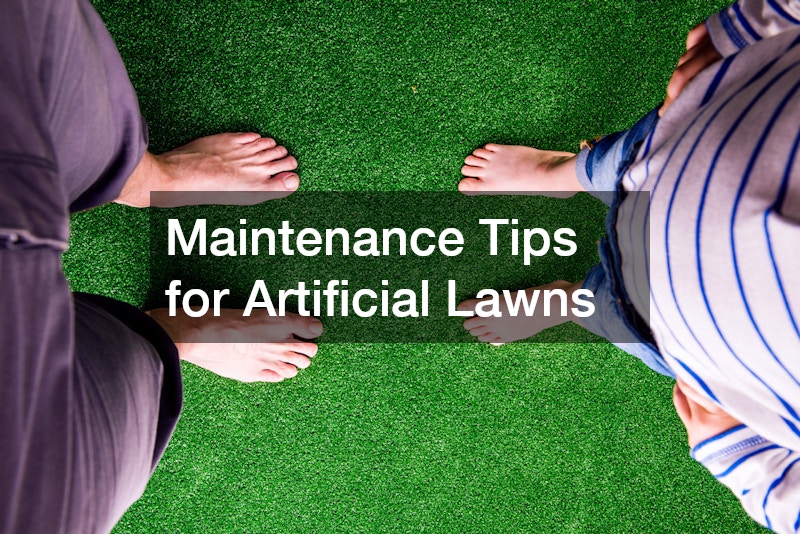The use of artificial lawns has become an increasingly popular choice for homeowners looking for a low-maintenance, visually appealing alternative to natural grass. However, while artificial lawns require less upkeep than their natural counterparts, they are not completely maintenance-free. Explore some essential tips and best practices to help you keep your synthetic turf in top condition.
Cleaning Your Artificial Lawn
Understanding the frequency of cleaning
Artificial lawns typically require cleaning to uphold their aesthetic and functional qualities. The cleaning frequency can vary greatly depending on a few key factors, such as climate conditions, how frequently the lawn is used, and whether or not pets frequently play or relieve themselves on the grass. In more humid or wet climates, cleaning should be more regular to prevent the development of mold and ensure longevity.
For households with pets, it is crucial to maintain a consistent cleaning schedule due to the waste and potential odors that can accumulate. Weekly cleaning, at a minimum, is recommended and can involve brushing away leaves, twigs, or debris, and rinsing the grass to prevent odors. Using a blower can help in removing loose debris and dust effectively.
Seasonal changes impact the cleaning regimen, too. During autumn, for instance, more frequent cleaning might be necessary due to fallen leaves clogging the drainage system. At a minimum, a monthly cleaning is advisable for homes without pets and in areas with low foot traffic. This balance helps maintain the lush look of your synthetic lawn year-round.
Removing Stains and Debris
Effective methods for removing stains
Debris accumulation is common and inevitable in outdoor settings, but regular maintenance can ward off unwanted stains. Begin by using a sturdy broom or a plastic rake to remove dirt and debris from the surface. This simple practice can prevent particles from getting embedded in the fibers, which makes cleaning and stain removal more challenging.
For more stubborn stains such as mud or spilled drinks, a mild detergent mixed with warm water can be applied. Use a soft-bristle brush to gently scrub the affected area. It’s important to avoid using bleach or harsh chemicals as they can damage the synthetic fibers, causing discoloration or deterioration.
In addition to regular cleaning, spot-checking for potential stains will help maintain your lawn’s appearance. Always blot spills rather than rubbing them, as rubbing can spread the stain. Implementing these methods ensures that your artificial lawn remains free from unsightly marks and retains its vibrant color.
Ensuring Proper Drainage
Assessing and improving drainage systems
Proper drainage is pivotal in maintaining the condition and durability of an artificial lawn. Poor drainage can lead to water pooling, which not only damages the turf but also encourages mold and mildew growth. Begin by assessing the current drainage capabilities by observing water flow after rain or watering.
If you notice areas of water accumulation, it’s crucial to address these promptly. Modify the base layer by adding a sand or gravel mixture to enhance absorption and water flow. Maintaining a slight slope can also aid in directing water away from the surface, preventing undue saturation.
Regular inspections and maintenance of the drainage system will protect your investment in synthetic turf. Periodically check and clear out any blockages in drains and ensure that they are working efficiently. Proactive maintenance of drainage systems is an integral part of sustaining an attractive and functional artificial lawn.
Managing Pet Waste
Maintaining cleanliness with pets
Owning pets and maintaining a pristine artificial lawn can indeed coexist with the right approach. Pet waste management is crucial for both odor control and grass longevity. Begin by promptly removing solid waste using a pooper scooper, and consider disposing it in a pet waste disposal system for convenience.
After solid waste removal, use a hose to dilute and wash away any residual mess. There are also commercial products available specifically designed to neutralize odors and sanitize the area without harming the grass. These can be valuable in maintaining the pleasant look and smell of your lawn.
For pet owners, instituting regular checks and cleaning routines is particularly crucial. Educate your pets on specific areas to use for their needs, which can reduce the workload for cleaning and maintain larger areas of the lawn. Through routine care, pet owners can enjoy the benefits of synthetic grass without the downsides of pet-related messes.
Preventing Mold and Mildew
Proactively combating mold issues
One of the main concerns with artificial lawns, especially in damp climates, is the susceptibility to mold and mildew. Moisture trapped under the surface can create a breeding ground for these unsightly and potentially harmful growths. To prevent this, ensure your lawn is equipped with an effective drainage system as previously detailed.
Regularly brushing the turf will allow air to circulate between fibers, making it harder for mold to take root. Keep your lawn dry whenever possible, and in shaded areas that receive less natural sunlight, consider using a mold inhibitor spray as a preventive measure.
If you spot signs of mold—usually black or white patches—tackle them immediately with a vinegar and water solution before they worsen. Mold prevention is a matter of consistent effort and maintenance practices, which can help maintain the integrity and beauty of your artificial lawn over time.
Maintaining an artificial lawn can significantly enhance the aesthetic and durability of your outdoor space. By following these maintenance tips and understanding the needs of your synthetic turf, you can enjoy a lush, green lawn all year round with minimal effort. Ensure regular cleaning, effective drainage, and proper care to enjoy a beautiful, sustainable outdoor area.




